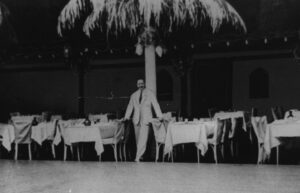
Ears, War and Snorkeling
My wife reminds me that I possess a keen mind for collecting the most useless details and trivia. She usually brings up that point when I cannot recall simple or quite useful bits of information such as account user names or passwords. Frankly, who cares about mundane login credentials when you can read up on the War of Jenkins’ Ear.
Recently, I came across reference to the War of Jenkins’ Ear and must confess that I had never heard of it. An actual war had not been taught or even referenced in all my years in grade school, high school, college or law school. With a memory for ridiculous historic facts, surely I would recall a war started over Jenkins’ cut off ear. If the War of Jenkins’ Ear were taught in my grade school, there would have been dire re-enactments of loss of a body part during recess.
This war must have been waged centuries or millennia ago between obscure and lesser known powers. Wrong! The war battled in the 1730s and 1740s with action seen in the Caribbean, Florida and Georgia. Mid-1700s. The Caribbean. An ear at issue. The War of Jenkins’ Ear must be a pirate war.
From the file of useless facts and details in my head, I know how important earrings were to pirates and pirate culture in the 1700s and 1800s. Pirate gold hoop earrings were believed to provide relief from sea sickness (the pirates guessed incorrectly on that medical advice, but other metals such as copper could have curative powers). Pirate earrings served as currency for ransom in kidnapping scenarios. Pirate earrings provided a storage space for wads of wax needed for hearing protection when canons were in use. Finally, pirate earrings would be cashed in upon the death of a pirate to purchase a casket and pay for burial.
So, clearly, loss of Jenkins’ ear, a pirate ear so necessary to hold the beloved pirate earrings, may somehow be the genesis of war. Wrong, again! Jenkins was no pirate. Robert Jenkins captained a British merchant ship. In 1731, while off the coast of Florida, Jenkins’ ship, the Rebecca, was boarded by a privateer loosely connected with the Spanish authorities. This privateer, Juan de Leon Fandino, accused Jenkins of smuggling and cut off Jenkins’ left ear. Fandino claimed to command the “guardia costa” (Spanish coast guard off Florida). Not much else is known about Fandino beyond his operations being backed by the name, if not the might, of the Spanish Navy. Sounds like an early form of a mob-style protection scheme. Probably operated out of Miami.
Word of the Van Gogh incident on the Rebecca reached England with the encounter briefly mentioned in the press. In fact, the entire incident appears completely forgotten until eight years later in 1739 when the matter was brought up in graphic detail, allegedly including the dismembered ear itself, in the House of Commons.
We will get into the 1739 events which breathed new life into Jenkins’ ear. It helps to understand the geopolitical climate between 1731 and resurrection of the ear in 1739. The British and Spanish enjoyed a love-hate relationship in the 1700s. In conquering the world and spreading their empires, they mostly landed on truces or at least tolerance. There were vast areas to plunder under the guise of exploration with low hanging resources to be taken by all.
Nonetheless, three factors stood in the way of this British-Spanish uneasy alliance: desire for greater power; France; and greed.
In 1732, one year after the ear removal, and entirely unrelated to that incident, England established its colony of Georgia in North America. Georgia bordered the Spanish colony of Florida with both powers cautiously watching the potential intentions of the other. Border skirmishes between Georgia and Florida continued in the 1730s with those incidents not escalating to major conflict. The major conflict came much later when Georgia and Florida played their annual college football game known as the World’s Largest Outdoor Cocktail Party. Now that is a peace treaty with staying power!
In 1733, with this new threat to its sovereignty and shipping routes, Spain responded to the establishment of the Georgia Colony by elevating France to its primary trading partner. Under the Pact de Famille between Louis XV and Philip V, France and Spain vowed to protect their trade routes. During this period in the Caribbean, the Spanish authorities permitted free passage to French ships carrying contraband goods. The Spanish stopped and searched British ships enforcing severe restrictions on goods.
The British value of trade (and pillaging) in the Caribbean took a serious hit in the 1730s. Spain aligned itself more closely with France serving as an even greater threat to the British. Yet, the British and Spanish maintained the peace.
Enter greed and the Port of Cadiz. The Port of Cadiz in southern Spain served vital interests. Imports of British goods, either destined for mainland Spain or the Spanish colonies, entered through the Port of Cadiz. The Port also functioned as gateway to the Mediterranean Sea and valuable trade routes to Italy. The leading merchants in London commonly referenced trade through the Port fo Cadiz as “the best flower in our garden.” Those minor inconveniences in North America and the Caribbean held little sway in the larger British-Spanish mercantilism.
In the Caribbean, loss of access to markets and trade routes by the British remained hard felt at the South Sea Company — a Crown controlled enterprise. In 1738, backed by the South Sea Company and perhaps even France, the Tory political party in England grew in strength arguing against the dangers of European “entanglements.”
In one effort to reduce these entanglements, the South Sea Company assisted in organizing the January 1739 Convention of Pardo which established a Commission to resolve the Georgia-Florida border disputes. The proposed agreement included Spain paying the British 95,000 Pounds (present value of $15.2 mm USD) as damages for seized ships; and the South Sea Company paying King Philip V 68,000 Pounds (present value of $10.8 mm USD) as the king’s lost profits.
The South Sea Company balked and refused to pay King Philip V. Instead, the company orchestrated the spectacle of earless Captain Robert Jenkins appearing before the House of Commons to recount the atrocities committed against him and all British people by the savage Spanish some eight years earlier. While there is no official record in support, many accounts of Jenkins’ presentation include reference to showing off the severed ear. The House of Commons declared the incident from 1731 an insult to Britain’s honor and a clear casus belli. The South Sea Company cleared the path to a declaration of war in order for the British to fight for the company’s trade routes.
In October 1739, British ships in the Caribbean intercepted and attacked Spanish merchant ships. The War of Jenkins’ Ear began. The actual military conflicts in this war remained few with efforts primarily focused on port blockades or firing on port towns. Yellow fever, and not military conflict, remained the cause of the vast majority of the 30,000 deaths in the war. In 1740, the British laid siege to St. Augustine in Florida but abandoned that attack after supplies to St. Augustine could not be stopped. In Georgia, the Battle of Bloody Mose witnessed the Spanish and free black forces repelling the British advance.
The War of Jenkins’ Ear limped along until 1742 when it became subsumed within the War of Austrian Succession. In fact, both Britain and Spain removed their naval power from the Caribbean to support this larger European-based conflict. No further Spanish-British military conflict followed in the Caribbean, but privateering attacks flourished. Pirates got their foothold after all.
The War of Jenkins’ Ear did include one military disaster which continues to benefit us to this day. In 1742, the HMS Looe captured a Spanish privateer vessel off the coast of Florida. The Looe towed the captured ship passing just five miles south of Ramrod Key in the Florida Keys when it ran aground on a sand bar. The HMS Looe sank with the Spanish ship then scuttled at the scene. Today, that area, while technically a sand bar, is known as Looe Key. Looe Key boasts the best snorkeling and scuba diving areas in the Keys. I can add these facts to my useless historic and trivia knowledge base.
The War of Jenkins’ Ear surely was not in vain. We must have learned something from a conflict between nations. Perhaps the origin of war being entirely manufactured by the South Sea Company provides a lesson. There it is. Plain as can be. We must be cautious about supposed justifications for conflict when the reasons are not patently obvious. Since the 1730s then, we have not rushed into chaos based on made up or exaggerated stories, right?
Perhaps Collin Powell standing before the United Nations opining about Weapons of Mass Destruction is an exception. Then there is Archduke Ferdinand as the executed scapegoat to start WWI. We need to be cautious of untruths, large or small, from leaders of our institutions or the War of Jenkins’ Ear will be but another forgotten excuse for conflict to serve the interests of the very few.
Nonetheless, the War of Jenkins’ Ear may provide a teaching moment for mediation and conflict resolution. Claims may not always be as they appear. The South Sea Company used Jenkins and his severed ear to stir up the Tories who then did the work for the South Sea Company. The stated reasons justifying war with Spain were the barbaric acts of all of Spain, forgetting that the incident involved one privateer from years ago. The privateer may or may not have had the backing of local Spanish authorities. Let’s not allow facts to get in the way of a good story and casting blame on the evil and aggressive Spanish Empire.
At times, mediators need to look behind or beyond the claims as presented. Perhaps larger or other issues serve as the source of the conflict. As importantly, perhaps other players or potential stakeholders stoke the embers of the claims presented by the parties. There may be issues with competitors or larger economic concerns driving the claims. Listen carefully to how the dispute arose and inquire whether other parties not involved in the claims stand to benefit either with the continued conflict or its resolution. These issues beyond the four corners of the dispute before the mediator may need to be addressed in any successful resolution.
As for Captain Jenkins, he is immortalized in the War of Jenkins’ Ear. Give credit to historians for naming the war as such because the War of The South Sea Company’s Manipulation and Greed simply does not have the same ring to it.




